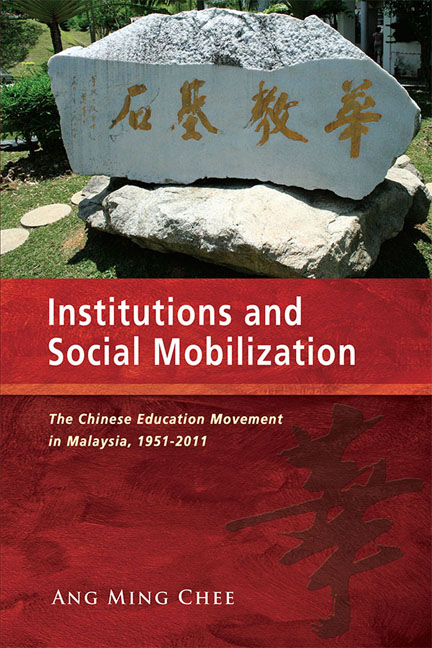Book contents
- Frontmatter
- Dedication
- Contents
- List of Tables, Figures, and Maps
- Acknowledgements
- Abbreviation
- 1 Institutions and Social Mobilization
- 2 Nation Building and Formation of Social Movement
- 3 Challenges and Adaptations
- 4 Leaders, Alliances, and Politics
- 5 Mobilization Machinery
- 6 Social Mobilization in Non-Liberal Democracies
- Appendices
- Bibliography
- Glossary of Non-English Text
- Index
- About the Author
2 - Nation Building and Formation of Social Movement
Published online by Cambridge University Press: 19 May 2017
- Frontmatter
- Dedication
- Contents
- List of Tables, Figures, and Maps
- Acknowledgements
- Abbreviation
- 1 Institutions and Social Mobilization
- 2 Nation Building and Formation of Social Movement
- 3 Challenges and Adaptations
- 4 Leaders, Alliances, and Politics
- 5 Mobilization Machinery
- 6 Social Mobilization in Non-Liberal Democracies
- Appendices
- Bibliography
- Glossary of Non-English Text
- Index
- About the Author
Summary
INTRODUCTION
The development of the Chinese education movement in Malaysia parallels Malaysia's domestic politics after the British colonial era. The decolonization of the Malaya Peninsula in the post-World War II years redefined the balance of power, especially amongst the English-educated ethnic leaders. Although these elites dominated official state decision-making mechanisms, Malaya (renamed as Malaysia after the Peninsula merged with Singapore, Sabah, and Sarawak to form the new federation in 1963) was vulnerable during its infancy and therefore allowed space for negotiation with the influential vernacular-speaking ethnic elites. This chapter gives special attention to the role of Chinese elites in raising political awareness and creating a series of social movements amongst Malaya's Chinese communities through three main platforms: Chinese political parties, Chinese guilds and associations, as well as Chinese schoolteachers and Chinese school committees associations.
The chapter first explores the formation of political parties such as UMNO and MCA, and the significance of the Alliance coalition in making a peaceful demand for state independence from the British. To strengthen intra-Chinese collaboration, MCA established the Grand Three Associations of Chinese Education in collaboration with Dongzong and Jiaozong in 1952. The Grand Three was successful in bridging the state and the Chinese education movement actors until it started crumbling in 1960, when its pro-vernacular education leaders left MCA. From then on, the Chinese education movement began to nurture stronger bonds with Chinese guilds and associations, which laid the foundation for the movement's trajectories from the 1970s to the 1990s.
The efforts of nation building by the Malay-dominated state unavoidably posited threats that would dilute the vernacular identities of the non-Malay communities, especially after the departure of Singapore from the Federation of Malaysia in 1965. The Chinese’ resistance against the state's assimilation attempts is best demonstrated in their overwhelming support of Dongjiaozong's Merdeka University campaign in 1967. The chapter ends with a discussion on the impact of the implementation of the New Economic Policy in 1971, and the political consequences of normalization of diplomatic relations between Malaysia and the People's Republic of China in 1974.
IMPACT OF COMMUNIST THREATS
Prior to World War II, massive migration had resulted in the number of Chinese and Indian immigrants outnumbering the Malays in the Peninsula, making it possible for immigrants to challenge the status quo of the native majority.
- Type
- Chapter
- Information
- Institutions and Social MobilizationThe Chinese Education Movement in Malaysia, 1951-2011, pp. 38 - 70Publisher: ISEAS–Yusof Ishak InstitutePrint publication year: 2014



